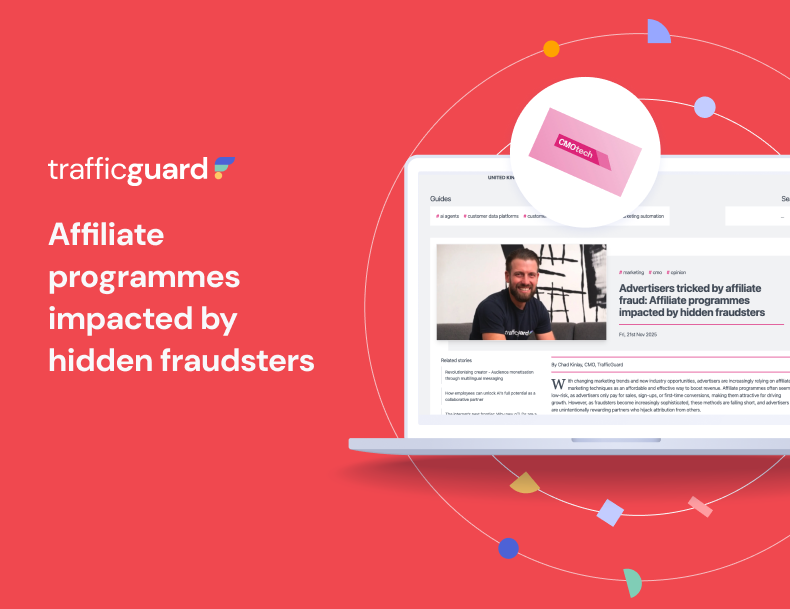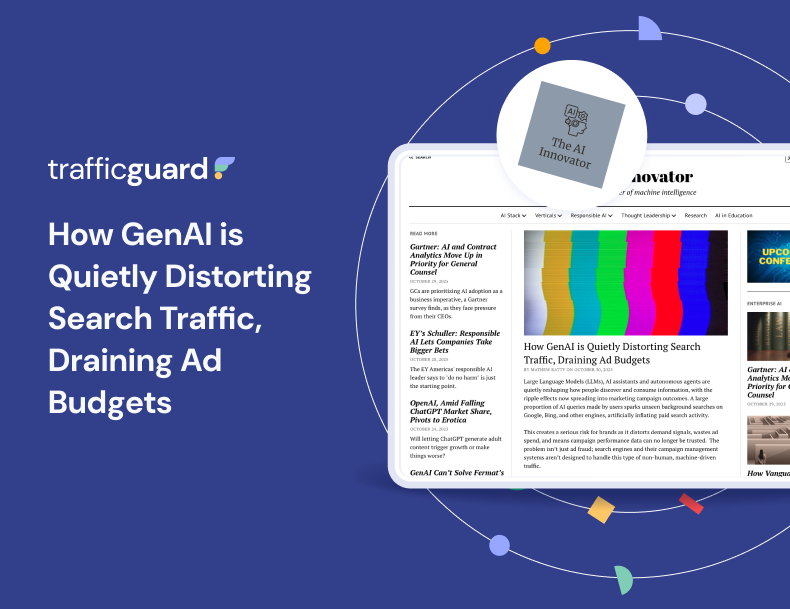Mat Ratty: Marketers who fire and forget are the easiest ad fraud targets

By Mat Ratty, founder and CEO at TrafficGuard
If you’re advertising on digital channels and not worried about the efficacy of your spend, well, you certainly should be. Here’s why.
In December, the US Association of National Advertisers (ANA) released its Programmatic Media Supply Chain Transparency Study, which revealed a staggering 35% of ad dollars are ‘loss of media productivity costs’ – non-viewable impressions, or occurring on Made for Advertising (MFA) sites.
Unsurprisingly, these findings, which followed on from a similar ANA report in June, spurred a large-scale media blitz, with a phalanx of senior agency executives pledging to safeguard their advertising from MFAs.
Then, at the start of this year, advertising transparency platform Adalytics followed up the ANA’s findings to gauge what action had been taken. The results were variously predictable or shocking, depending on how much credit you give the average C-suite leader.
“Hundreds of ANA members and other brands continue to have their ads observed on MFA websites as of January 2024,” Adalytics revealed, more than six months after the ANA released its first transparency report.
These include gargantuan brands such as Procter & Gamble, Bayer, Reckitt, AT&T, the Wall Street Journal, General Motors, Google, Meta, and many others.
This is by no means a problem unique to US markets. In 2023, the IAB was moved to release a 36 page Digital Ad Fraud Handbook, which outlined the challenges the industry faces, while revealing the incidence of ad fraud lifted 7% in the APAC region over the previous year. And it’s a safe bet it will have risen again by the time the next handbook comes out.
It makes depressing reading.
To understand how this happens in the first place, we need to delve into how ad fraud works in basic terms.
It begins with MFA sites giving themselves a plausible name and then scraping content from other legitimate websites and incorporating it into their own.
This subterfuge then creates the impression in the programmatic ad space that they are authentic websites, and thus they attract ad dollars from unwitting vendors. They will then place ads at a relentless pace, maximising gains and minimising effectiveness for the advertiser.
As the Adalytics report reinforced, “MFA sites employ aggressive ad refreshes, which can result in a user being shown the same ad up to thousands of times during a single page view session. For example, H&R Block had 2,117 impressions served to one consumer on a single MFA article in less than one hour. Verizon had 781 ad impressions served to one consumer on an MFA article in less than one hour.”
Aside from the consumer bombardment, the costs are eye-watering. “Due to an apparent lack of frequency capping when campaigns serve on MFA sites, some brands are paying astronomically high prices to reach a single consumer. For example, Kroger paid an effective ‘cost per 1,000 people reached’ of $5,491 to reach one consumer on an MFA site,” the Adalytics report continued. You don’t have to be Mark Ritson to realise that this is a very raw deal.
Why does it happen? My suspicion is that many marketers simply don’t know the truth because they don’t have access to tools that reveal ad fraud is actually occurring. Or they are hamstrung by a combination of complacency (believing their ad dollars are protected from illegitimate sites), or simply haven’t the faintest idea where to start to tackle the problem.
So how can marketers and agencies avoid falling victim to such fraud? Why not begin with a bit of old fashioned scepticism.
Advertising automation, AI-decisioning, and the growth of performance channels all have the power to create new efficiencies for marketers, but abdicating decision-making can lead to ruinous outcomes.
Yes, today’s burgeoning adtech is a boon for marketers, but like anything in life, it’s prone to being gamed. Marketers who simply fire and forget are the easiest of marks for bad actors. Those controlling advertising budgets need to be forensically auditing the actions, like clicks, that drive their results.
It also pays to be curious and to continually look at ways to help protect your marketing spend. As a starting point in mitigating the risk of ad fraud wastage, marketers can consider support from robust ad verification and fraud prevention tools.
These tools utilise advanced algorithms and machine learning to detect irregular patterns and anomalies in ad performance data, helping marketers identify and blacklist fraudulent sources.
Additionally, leveraging third-party partnerships with trusted verification and measurement vendors can provide added layers of protection against ad fraud. By continuously monitoring ad campaigns and proactively identifying and blocking fraudulent activity, marketers can ensure that their advertising budgets are allocated effectively and protected.
To bastardise an old saying, the price of advertising ROI is eternal vigilance. Those that take active steps to preserve their advertising dollars will find their marketing is a lot more effective. Those that don’t – like many of the big name advertisers in Adalytics’ report – will instead find that a lot of investment will turn into an astronomical amount of wastage.
Read more 👉 here.
Get started - it's free
You can set up a TrafficGuard account in minutes, so we’ll be protecting your campaigns before you can say ‘sky-high ROI’.
He is the Co Founder and current Chief Executive Officer of Adveritas and TrafficGuard since 2018. Prior to this Mr Ratty Co-founded MC Management Group Pty Ltd, a venture capital firm operating in domestic and international debt and equity markets, who are also substantial shareholders in the Company. At MC Management, Mr Ratty held the role of Head of Investment and was responsible for asset allocation.
Subscribe
Subscribe now to get all the latest news and insights on digital advertising, machine learning and ad fraud.







